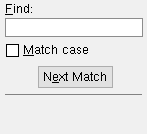 Open ( Assembly Editor > Ctrl + o )
Open ( Assembly Editor > Ctrl + o )
Tool summary :
Also see :
- Assembly editor (with Assembly Edit )
- File > Exit (closes the Assembly Editor )
- Model > Assembly > Edit in Modeling (functionally similar to Open ( Ctrl + o ))
- Adding material in the Assembly Editor
- Adding holes, bolts, welds in the Assembly Editor
- Editing material, holes, bolts, welds in the Assembly Editor
- Deleting material, holes, bolts, welds in the Assembly Editor
- Tips for using assemblies (topic)
page 1 | contents | file > exit
 Step-by-step instructions :
Step-by-step instructions :
1 . In the assembly editor , invoke Open Assembly using one (1) of the following methods:
Method 1 : Choose File > Open .
Method 2 : On your toolbar, click the Open Assembly icon, which is pictured above. If the icon is not currently on your toolbar, you can add it using Toolbar Configuration .
Method 3 : Use a keyboard shortcut . Ctrl + o is the default.
2 . The Select One Assembly selection dialog opens. On it is a list of all assemblies in your current Job .
|
Typing characters to " Find " selects the assembly that begins with those characters. Pressing Enter closes this dialog and opens the selected assembly. |
2a : Double-click the one assembly that you want to open.
3 . The selection dialog closes, and your computer screen redraws to show the assembly that you selected in step 2. The view of the assembly is the view that was current when the reference point of the assembly was located, for example, by doing a File > Save in the Assembly Editor . The toolbar configuration that is loaded is the choice made to User and Site Options > Toolbars > Ultimate " Assembly editor " or Modeling " Assembly editor ." Here are some of things you can do to the assembly you just opened:
page 1 | contents | file > exit | top








